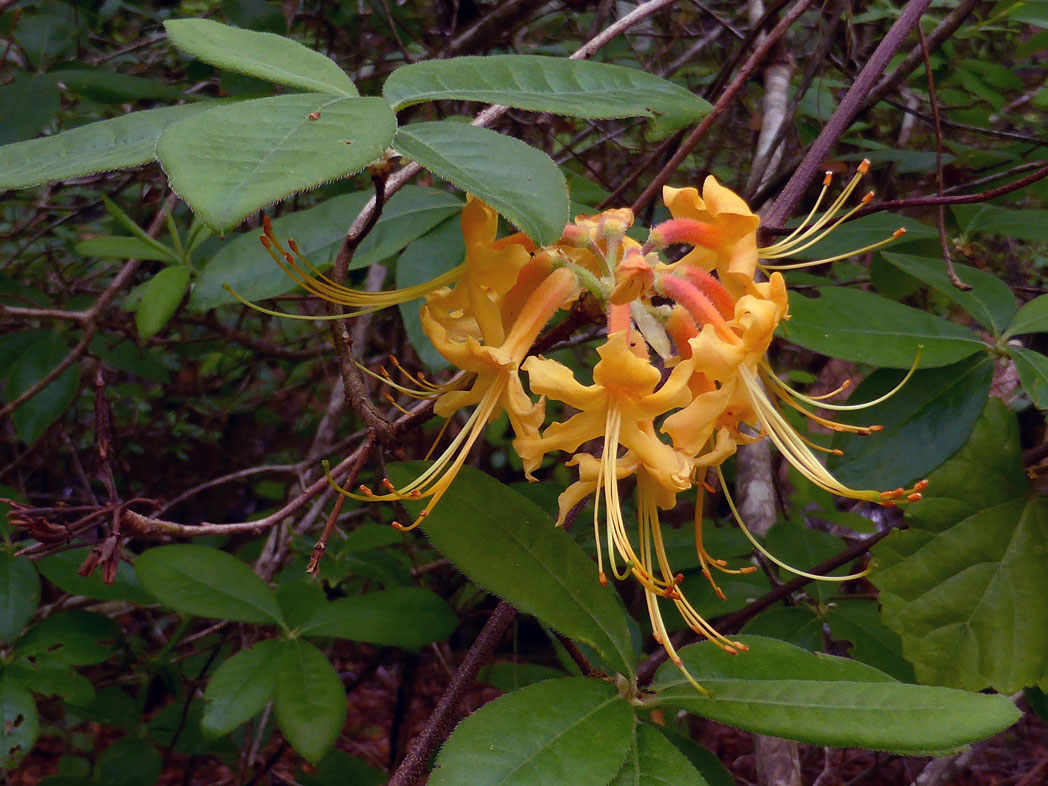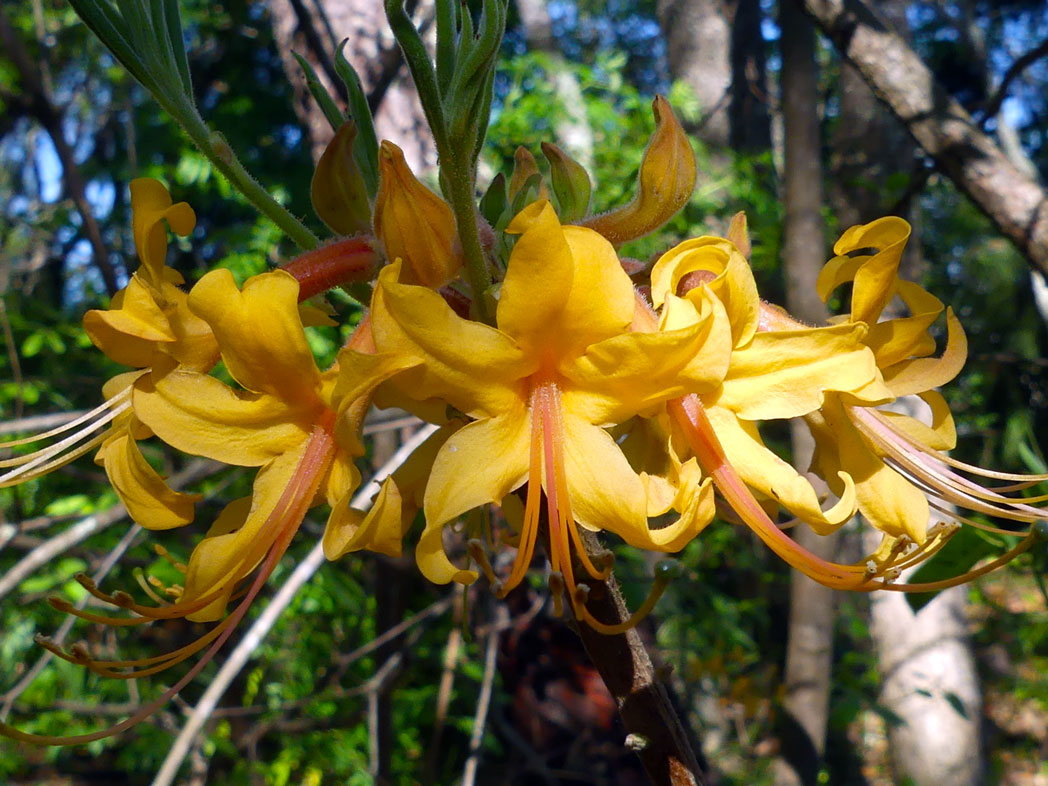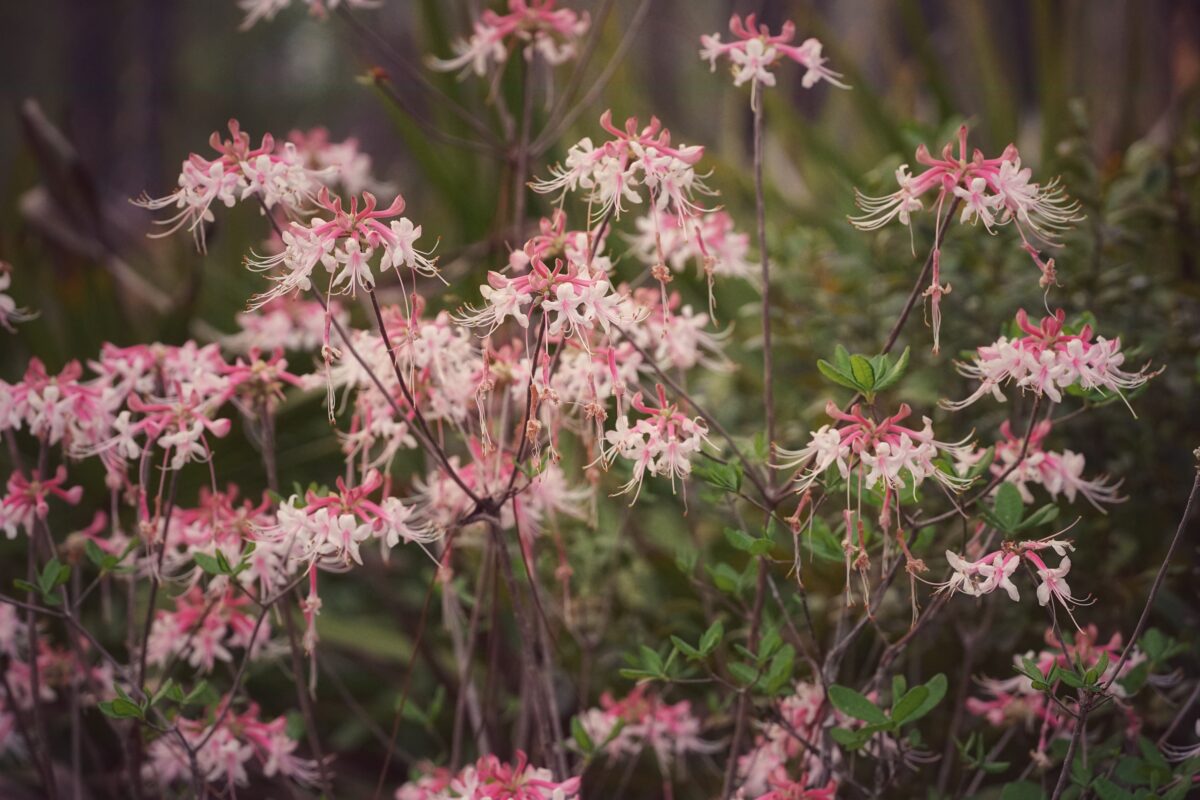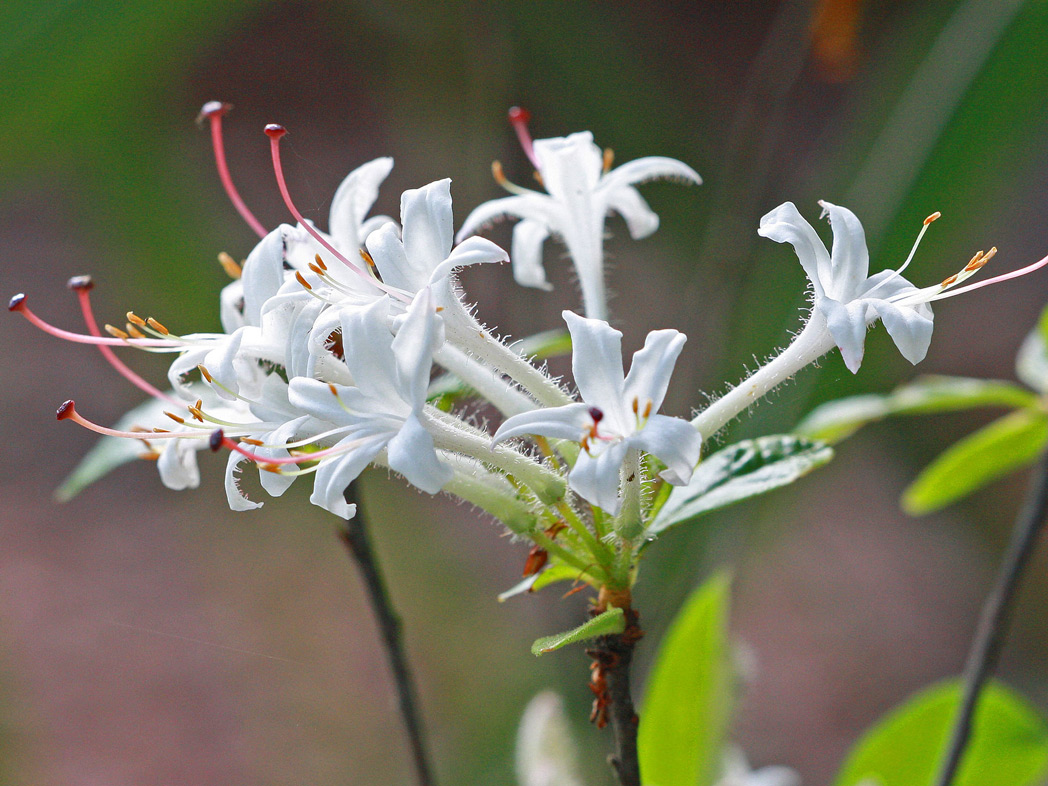Florida flame azalea
Pictured above: Florida flame azalea (Rhododendron austrinum) by Stacey Matrazzo. Click on terms for botanical definitions. View post as a PDF.
Florida flame azalea (Rhododendron austrinum) is a deciduous flowering shrub found in hardwood, floodplain and slope forests, bluffs and ravines in North Florida. Although easily overlooked most of the year, it puts on a stunning spring display of fragrant fiery flowers. The blooms appear before (or as) the plant leafs out, and attract hummingbirds, butterflies and bees. The plant is a state-listed endangered species.
Flowers are yellow to orange with long, trumpet-shaped corolla that are covered in sticky, gland-tipped hairs. The corolla opens into five lobes. Pistil and stamens are elongated and conspicuously extend beyond the floral tube. Calyx is five-lobed. Flowers are born in clusters. Leaves are simple, elliptic to ovate and pubescent with entire or minutely toothed margins. Apices are pointed. Leaf arrangement is alternate. Branches are loose. Seeds are born in inconspicuous cylindrical capsules.
The genus Rhododendron comes from the Greek rhodon, or “rose,” and dendron, or “tree.”

Family: Ericaceae (Heath family)
Native range: Panhandle east to Leon and Wakulla counties; Baker County
To see where natural population of Florida flame azalea have been vouchered, visit www.florida.plantatlas.usf.edu.
Lifespan: Perennial
Soil: Moist, acidic sandy, clay or loamy soils
Exposure: Filtered shade
Growth habit: 5–10’ tall, 3–5’ wide
Propagation: Seed
Florida regions of landscape suitability: North
Garden tips: Florida flame azalea is our showiest native azalea. It is an excellent ornamental plant that works well as a specimen or in a mass planting. It is easy to grow and requires little maintenance once established, but does not tolerate salt exposure.
Florida flames azaleas are often available at nurseries that specialize in native plants. Visit PlantRealFlorida.org to find a native nursery on your area.
Learn more about Florida flame azalea from the Florida Native Plant Society and the Institute for Regional Conservation
For information on other Rhododendron species, see these resources:



